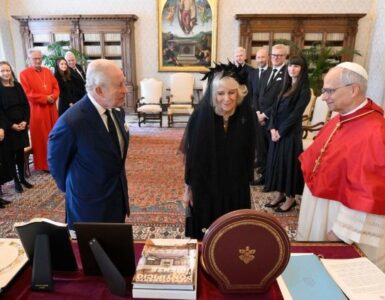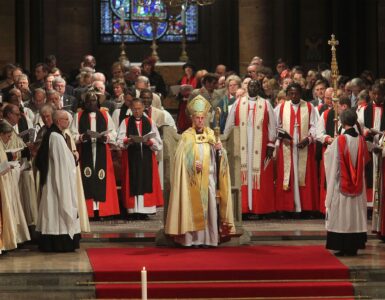By Antoni Campbell https://www.youtube.com/@LatinSlavsPodcast
Can Gym Culture be reconciled with Catholicism?
Was mich nicht umbringt, macht mich stärker; und was mich umbringt, macht mich unglaublich stark
Before I give the translation for the quote above, something I have been fascinated with recently has been reading the memoir of a certain Great War survivor. Arguably one of the most controversial writers of the 20th century in Western Germany, Ernst Jünger remains an absolute giant in the postwar society, simply because of his manliness or magnanimity in the face of excruciating horror in the trenches of World War 1. Many have criticized him, claiming him to be something of a Nationalist who glorified the war. Yet, his account is simply a recalling of what happened to him in the Great War today known as World War 1.

“What doesn’t kill me makes me strong; and what kills me makes me incredibly strong.” Ernst Jünger coined this famous adage in his 1934 work On Pain as quoted above in the original German. The idea behind the work comes from the necessity for sacrifice and suffering to be essential for the measure of man, contra to the idea that society should build ease and comfort.[1] Similarly, in his earlier work published in 1932, The Worker walks a similar route where Jünger describes the necessity for society to be run by warrior-worker-scholars.[2] In this article, I will synthesize the ideas of Jünger posited above into a woven web of Muscular Catholicism and the ideas found in secular bodybuilders, and how Catholics can apply both not only in the obvious spiritual life but in the physical realm of exercise and weightlifting.
As provided above, I have given the foundation for the desire of this article. Muscular Catholicism is a term that I affectionately associate with my friend Mike Pantile.[3] A bodybuilding legend, known as Mike Mentzer is the prime example of taking a secular bodybuilder and seeking to utilize his training for the Catholic. Known for his training method, “Heavy Duty,” Mentzer’s approach to bodybuilding was simple: Train as intensely as possible and account for the intensity by taking days off to let the muscles recover. Many have been astonished at this, and rightly so. In the golden age of bodybuilding, Arnold Schwarzenegger and other famous bodybuilders would lift for hours on end in the gym to attain their physiques. So, naturally, many sought to replicate these physiques by training like Arnold. However, there was a very obvious detriment to trying to lift like these bodybuilders, glaringly so because the average man neither had the money or the desire to risk their health by taking anabolic steroids. Due to the nature of steroids, the recovery of the muscles is much greater and the blood flow, that is essentially a very simple explanation of steroids as there is much more science and description of how they change the cells and even bone structure. This is the arena that Mentzer enters in. He was arguably the best contender for the 1980 Mr. Olympia, but in a very controversial decision, he lost to Arnold. Retiring, from bodybuilding, Mentzer dove further into his training method and dieting, ultimately refining it to perfection.
The Heavy Duty Method
The Heavy-Duty Method centers around the necessity to be able to learn two things: rest and intensity. There is a deliberate sacrifice in Heavy Duty. One must be willing to learn how to love the pain that comes with exercise and specifically, weightlifting. Mike Mentzer demanded that every trainee or mentee of his utilize this method for growth, stimulation, and recovery to achieve the results they sought. The adherence to the program meant excruciating focus and pain during training sessions and going all out for a specific set.[4] The method then proceeds to follow that all one truly needs is one set of exercise per body part to all out failure. A day training in total adherence to this would be to set up a barbell squat of one set to complete failure, a bench press (incline or flat) to complete failure, and a lat pulldown or Yates row to complete failure,leaving the gym to not come back for about 48 to 72 hours and repeat. His method had in mind the man who was not using pharmaceuticals or anabolic steroids, since much of his method relies on recovery and proper diet. Modern Lifting takes a much more scientific approach and seeks to sterilize much of the effort given to a particular session in the gym. Much more is given to a precise calculation of form, reps, and sets, so much so that nothing is tangible to the average man who is now having to calculate the proper angles and form that the new science-based lifter has shown him. Yet, even though Mentzer and Yates are somewhat outdated and outmoded in their approach, much can be gleaned from the philosophy of their approach for the Catholic man in the gym. Now, it must be said that I do not know enough about Yates’ current beliefs whether religious or political, but my understanding is that Mentzer was not a holy man nor a man whose personal beliefs should be imitated apart from the method he used and the desire to suffer and build a tolerance to pain since Mentzer practically worshipped at the feet of Nietzsche and Ayn Rand. That being said, it is not the actual philosophy of Menzter that must be “baptized” but the philosophy of his Heavy Duty Method that I think can change the perception of the average Catholic man that encounters exercise and his Catholic faith.
As was said above, I was attempting to utilize Jünger, Mentzer, and Yates to create a “philosophy of bodybuilding” for Muscular Catholicism. It is good for Catholics to be focused on strength. Not in the vain way that much of bodybuilding is ultimately centered around, but in a virtuous way. A man who embodies the virtues and cultivates a herculean physique to bring what is happening inward, outward. I think in the end, the physique is not what matters most in Muscular Catholicism aside from maintaining a healthy weight, neither being extremely underweight or vastly overweight, but to know one’s body type.However, it is also good to have goals to chase after when seeking to enter into the realm of “Muscular Catholicism” one does not need to become the next roadhead, in fact, even Mentzer was a huge advocate that most men who will not compete in the Olympia should never touch anabolic steroids for the sake of their health. Yet, he pushed his method of complete and total surrender to pain and suffering in the gym. This is something that I think many young Catholic men can enjoy and understand, much of today has been suffering as a young man, being told that you are “toxic” or a “pig,” it is very easy to want to throw everything away or seek to become a villain in your personal circles. Especially this becomes the case when Catholicism is not presented in its grandeur, but instead its altar girls, Karen from the liturgy committee being a lector, and Susan being the extraordinary minister, men will run from such an effeminate and inconsequential Catholicism that requires nothing of them and no sacrifice. Yet, much of traditional Catholicism appeals to the young man because it requires something of him, it requires him to punish his body, mortify his senses, and seek holiness in a world that is seeking to draw him into hell. How appealing, how wonderful it is to be a young man who suffers for the sake of God and his own personal holiness that he might too call himself a saint!

Willingness to Suffer
Except how often does one put on the veil of false piety and not access the depths of the faith due to his unwillingness to suffer. Many scoff at the vain bodybuilder, but what people fail to realize is that steroids do not automatically make the physique; there is so much that goes into the world of bodybuilding that it can boggle one’s mind. Everything from diet to recovery to on cycle to off cycle to gym days to cardio days will essentially all take into account the man that stands on the stage to receive the Mr. Olympia trophy. How disciplined the secular bodybuilder is, he gives everything to cultivating the physique of his body for the sake of touching Olympic Gold and being the Mr. Olympia. The discipline required to attain the herculean physique must first be put under such scrutiny and dedication to their craft to hone the body to be sculpted a certain way. Almost as if it is put under fire for the maker to bend it to his own creation a way a blacksmith does with a sword as it comes out of the furnace and onto the anvil. This is the mentality of Muscular Catholicism and its approach to building virtue both of the cardinal and theological but also of the martial virtues. Man’s ability to protect his family is bound up to his strength and determination to be able to provide for them in any situation whether financial and substantial in the case of food and shelter, but also in the way that should tragedy ever strike he is capable of handling the situation with clarity and calmness. Muscular Catholicism seeks to strike the weakness of vice and cowardice out of us and hopes through the utilization of exercise and weightlifting to cultivate a mentality built around penance and mortification.
The aspect of Muscular Catholicism is both an obvious pun since this aspect of Catholicism inherently attracts the masculine not the feminine, apart from the fact that women indeed want a man capable of protecting them and is strong in numerous ways. This is not however meant to be the Catholic version of “self-help.” The only self-help happening in this desire to avoid the effeminate aspects of cultural and nominal Catholicism is genuinely having some self-respect and avoiding the pitfalls of other movements that seek to offer “authentic and real” masculinity. Muscular Catholicism is an appeal for young men to do seek to bring the interior suffering and mortification into the gym, this is not to “sacrifice” anything at the altar of the barbell but it is to seek to let the steel teach us to love pain and to love sacrifice. I will advocate over and again for weightlifting and bodybuilding because there is something extremely satisfying in testing one’s strength and becoming obsessed with overcoming weakness. This is so easily transferred to how we ought to view the spiritual life and overcoming the vices by the grace of God and through His mercy and His merits. The gym is just one way to begin trying to put into action the interior aspects of the Faith that we so love as men who want to sacrifice something and who want to ascend Mt. Carmel.
Subscribe to the paper!
Locals access: PDF version, hours of video content and more!
Physical edition

[1] Wikipedia contributors, “Ernst Jünger,” Wikipedia, The Free Encyclopedia, https://en.wikipedia.org/w/index.php?title=Ernst_J%C3%BCnger&oldid=1300298661
(accessed July 30, 2025).
[2] Wikipedia contributors, “Ernst Jünger,” Wikipedia, The Free Encyclopedia, https://en.wikipedia.org/w/index.php?title=Ernst_J%C3%BCnger&oldid=1300298661
(accessed July 30, 2025).
[3] See video from Mike as an example of using “meathead theology” or Muscular Catholicism. Mike Pantile (@mikepantile), “Progressive Overload for the Soul,” YouTube,” Jun 26, 2025. https://youtu.be/M7H9d9sqojU?si=mjFL_XaZpzrVcqEz.
[4] A set refers to how many repetitions one is able to complete on a particular exercise. 1 set can be made up of as many repetitions, for example if I completed 10 repetitions of bicep curls, I have completed one set of bicep curls.




